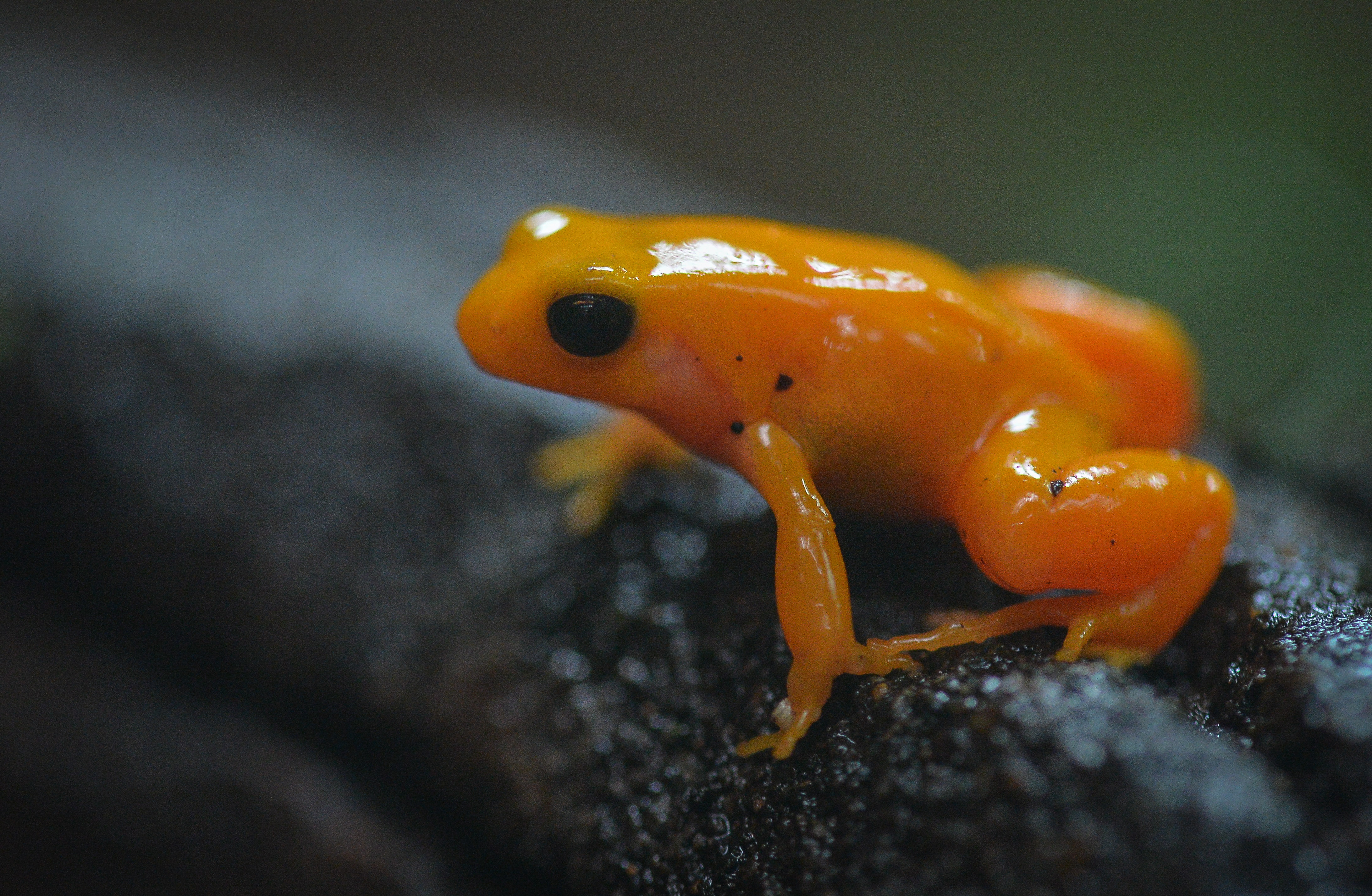The golden mantella frog Mantella aurantiaca is – for now – one of the many critically endangered island endemics barely holding on in Madagascar’s fragmented forests. Ecosystems here are subject to some of the most intense anthropogenic pressures on Earth. Over the last decade, ASA Partners Chester Zoo and Madagasikara Voakajy have worked to ensure the chirrup of these tiny amphibians can still be heard amongst the Malagasy trees for the foreseeable future.
From 2008, Madagasikara Voakajy, a Malagasy NGO, sought to assess the situation for the species. They found across the frog’s remaining range, the forest ponds essential for the mantella life cycle were disappearing rapidly as trees were cleared for rice fields by slash and burn “tavy”, or water made uninhabitable by illegal gold mining activity. In urgency, the organization encouraged the national government to bestow protection over a key area of high pond density and remaining forest. The Mangabe-Ranomena-Sahasarotra New Protected Area decreed in 2015 gave much needed hope to the project.
Chester Zoo joined Madagasikara Voakajy in its surveying efforts from 2012 onwards. Together, we now know that the protected area contains at least 276 ponds suitable for golden mantella habitation, though we estimate only ~40% of these ponds contain the species as of 2019.
With the protected area in place and the scale of the situation realized, the approach shifted to a long-term community-conservation based plan. Madagasikara Voakajy led capacity building sessions in forestry law and patrolling systems, building a team of forest protectors to ensure the breeding ponds were kept safe. Alongside this, villages surrounding the protected area received agricultural training in crop rotation, composting techniques, and the plantation of alternative crop, with the intention of benefitting people and slowing forest loss.
To reliably monitor the population in the protected area, Chester Zoo researchers developed a golden mantella specific capture-mark-recapture method involving the implanting of a fluorescent elastomer under the skin (VIE tagging). This method is now employed in research to understand the detailed habitat requirements and ecological needs of the species, and assess the impact of the conservation actions led by Madagasikara Voakajy. Through addressing fundamental questions around the species’ dispersion, migration and pond colonization, we can better manage the protected area and drive sustainable use of the forest in the years to come.
With the combined approach of ex-situ research, and in-situ community led conservation, we are preventing the extinction of one of the smallest and rarest frog species on Earth.
Photo © Chester Zoo

